Disney's Celebration
-
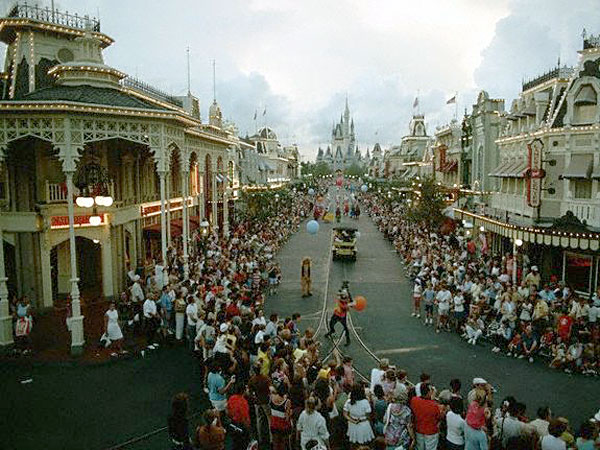 Photograph of Main Street USA, Disney World, by Jonathan Blair © Corbis. All rights reserved.
Photograph of Main Street USA, Disney World, by Jonathan Blair © Corbis. All rights reserved.Among the many attractions of Disneyland is Main Street USA, a sentimentalized, scaled-down version of an American small town. Ten years ago, the Disney Co. decided to build a brand new small town near Orlando, Fla.—only this one was for real. Celebration was the company's vision of the future, a vision that drew more on Norman Rockwell than Buck Rogers: Think wired bungalows. It was also a social experiment that attempted to provide a variety of housing for a variety of people. The project got off to a rocky start. The idea of the inventors of Mickey Mouse making a place for real people—rather than cartoon characters—was tailor-made for ridicule from those who disliked the company's conservative futurism. There was a much-publicized kerfuffle concerning the primary school, which some parents thought too progressive. Even the name, which managed to be both corny and pretentious, came in for mockery, although it is very much in the Florida tradition—nearby towns are named Homeland and Frostproof. My favorite, on the Gulf of Mexico, is Panacea.
-
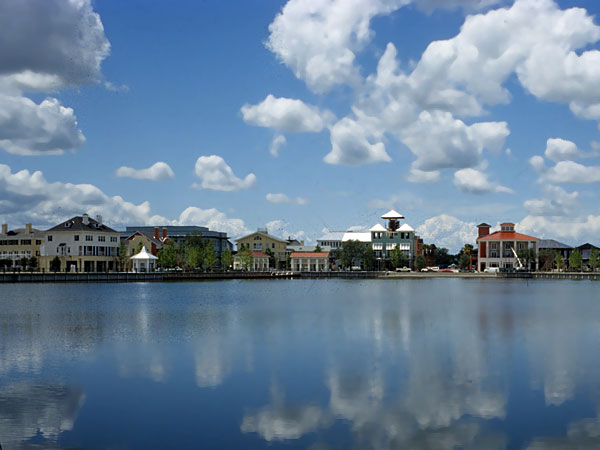 Photograph by Witold Rybczynski.
Photograph by Witold Rybczynski.Today, with almost 10,000 people living in Celebration (the town will eventually have 20,000 residents), it's worth looking at this odd fusion of entertainment and urbanism to see how reality has dealt with Disney's ambitions. Picturesquely situated next to a man-made lake, the town center is the most theme-park-like part of Celebration. Probably because it was built all at once, rather than piecemeal, it looks a little too perfect. In addition, the many boutiques and eateries that cater to the large numbers of day visitors make for an affected atmosphere. They are a cruel reminder that while Celebration was artfully designed to return to small-town values, it has suffered the fate of many attractive small towns, such as Aspen or Nantucket: Its downtown has become a tourist destination.
-
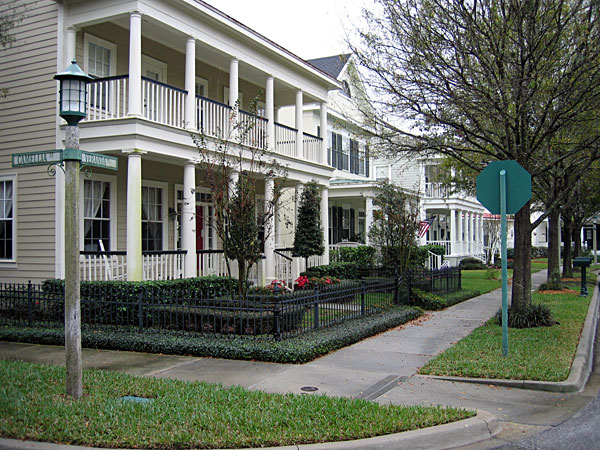 CREDIT: *Correction: An earlier version of this piece mistakenly stated that Columbia, Md., and Reston, Va., were planned 20 years ago; they were planned 40 years ago. Photograph by Witold Rybczynski.
CREDIT: *Correction: An earlier version of this piece mistakenly stated that Columbia, Md., and Reston, Va., were planned 20 years ago; they were planned 40 years ago. Photograph by Witold Rybczynski.The true test of a planned community is the quality of its residential neighborhoods. Celebration is the first comprehensively planned new town of any size since Columbia, Md., and Reston, Va., which were built 40 years ago.* However, Robert A.M. Stern and Jaquelin Robertson, who planned Celebration, didn't look to these projects for inspiration. Instead, they took their cue from the classic garden suburbs of the early 1900s. This wasn't nostalgia. The garden suburb represents the acme of suburban planning: compact, townlike, both individualistic and comfortably civic. It is one of our great design achievements, right up there with the 19th-century urban park and the skyscraper. The white clapboard, verandas, and garden fences along the street are as unmistakably American as the rocker on the porch.
-
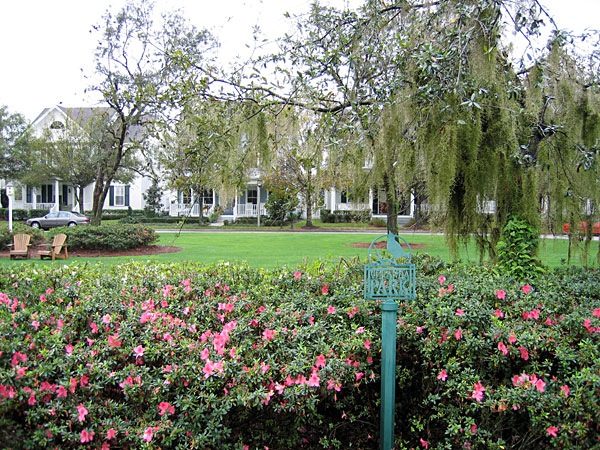 Photograph by Witold Rybczynski.
Photograph by Witold Rybczynski.What distinguishes the classic garden suburb from the run-of-the-mill suburban planning that dominates the American metropolitan landscape is the detailed design of the public realm: the curbs and sidewalks, the street trees, the greens and parks. At Celebration, streets are not laid out in a simple grid, or in standardized cul-de-sacs, but artfully planned to create a sense of place. Small green spaces and parks dot the community. This is not so much a question of providing recreation space, although many of the backyards at Celebration are so small that having a place for the kids to throw a ball is a definite plus. The chief purpose of the green spaces is to introduce variety to the streets, that is, to make walking around an agreeable experience.
-
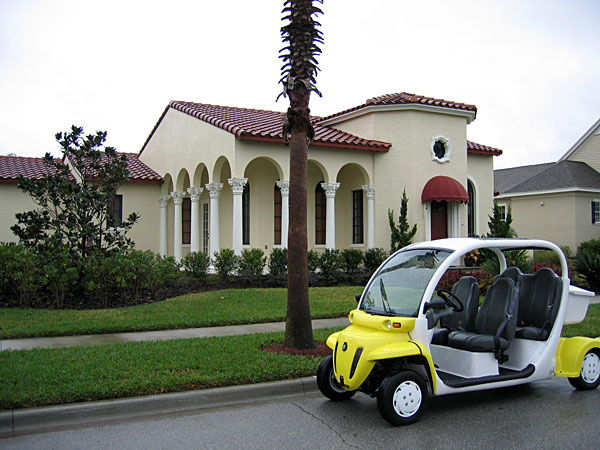 Photograph by Witold Rybczynski.
Photograph by Witold Rybczynski.The commercial homebuilders at Celebration must follow a set of architectural rules that govern the external appearance of the houses. This is not a nefarious Disney plot, as some critics have implied, but a common practice in master-planned communities. To avoid cookie-cutter uniformity, Disney gave builders the choice of several architectural styles such as Colonial Revival, Victorian, and Craftsman. "Modern," given the preferences of American home buyers, was not an option. Yet an impression of sameness persists, for the houses share the same contemporary building materials and details. All too often they also share a bland, middle-of-the-road civility. This is understandable, since builders can't afford to antagonize buyers, but too much politeness can be a bore. The happy exceptions are the bumptious "Mediterranean" houses that occur here and there. They exhibit a good-natured Floridian vulgarity that is refreshing among all the good taste.
-
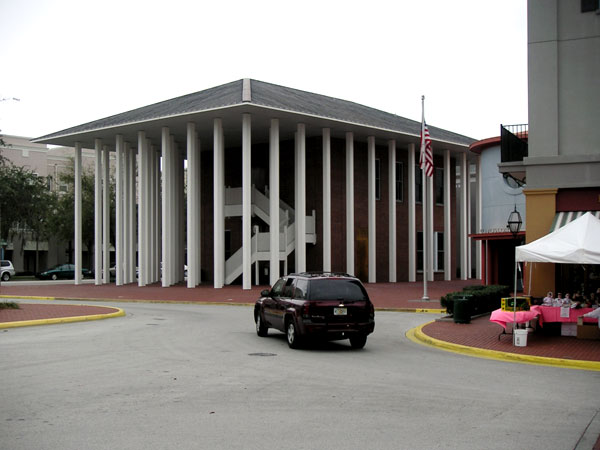 Photograph courtesy of Arcadia Land Co.
Photograph courtesy of Arcadia Land Co.The streets of Celebration are a pleasure to walk around in, perhaps because the architecture of the houses is so ordinary and familiar. Much of the town center, on the other hand, is adamantly elitist. Michael Eisner, Disney's CEO, is an architecture buff, and Celebration boasts several signature buildings. Philip Johnson's overblown Town Hall, with its forest of columns, makes neither functional nor architectural sense. Next door, Michael Graves' little post office is a weak caricature of a civic building, and across the street, the late Charles Moore's information center lacks his usual wit and comes across as a clunky one-liner. One has the feeling that the stars were too conscious of each other's presence, glancing over their shoulders rather than concentrating on the job at hand. The more relaxed buildings are more successful: Cesar Pelli's Art Deco movie theater, and Graham Gund's hotel, which looks like a large mansion that has been converted into a stylish hostelry.
-
 Photograph courtesy of Arcadia Land Co.
Photograph courtesy of Arcadia Land Co.The most successful star turn at Celebration belongs to Robert Venturi and Denise Scott Brown. Their urbane little bank, posed nicely on its street corner, is a serious work of urban architecture. Unlike the kitschy designs around the corner, this eccentric brand of pop art has aged well. "I am not, nor have I ever been, a postmodernist" Venturi insists, yet this ironic design, without paying literal obeisance to the "traditional" theme of the town center, manages to look forward and backward at the same time. Which was the whole point of postmodernism, wasn't it?
-
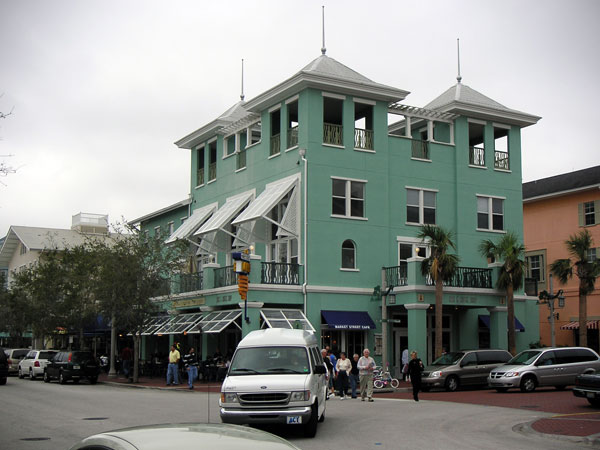 Photograph courtesy of Arcadia Land Co.
Photograph courtesy of Arcadia Land Co.The "background" buildings, designed by Stern and Robertson, are low-rise structures that house shops, offices, and apartments, in a variety of combinations. When it was built, nine years ago, this arrangement represented a break with conventional real-estate practice. But it has proved remarkably successful. Almost all the apartments in the town center, which Disney sold last year, are being converted into condominiums. It is no wonder that they are popular. The buildings, many of which are arcaded, are all slightly different yet manage a comfortable sense of continuity. The overall approach reminds me of Addison Mizner's 1920s Via Parigi in Palm Beach, Fla. Mizner designed in a flamboyant Hispano-Moorish style, whereas Celebration looks vaguely Caribbean, with vivid colors, Bermuda shutters, deep overhangs, and verandas. This is scenographic design, to be sure, but done with panache and considerable skill.
-
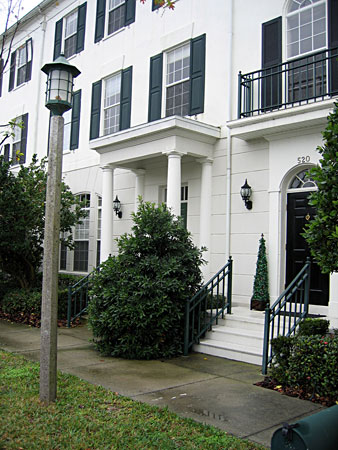 Photograph by Witold Rybczynski.
Photograph by Witold Rybczynski.Celebration has a variety of housing: condominiums and apartments, small and large houses, townhouses and villas. The latter, when they are designed in the "classical" style, are particularly attractive, if you don't mind your Georgian with a dash of palmetto. Since a 22-foot townhouse is considerably less expensive than a free-standing house on a 70-foot lot, buyers have a choice of prices. This is part of a strategy for which Disney deserves credit: attempting to create a community where people with different incomes could live. The worthy goal has proved elusive, however. Since Orlando is a particularly hot real-estate market, and Celebration is popular with home buyers, in the last five years house prices have doubled. Many properties are being bought by investors, rather than conventional home owners, and rented out while awaiting resale. In the early days of Celebration, Disney drew fire for strict rules controlling speculation. It now appears to have been a good idea, since the company's egalitarian vision of Our Town has been compromised. Celebration may be too economically successful for its own good.
-
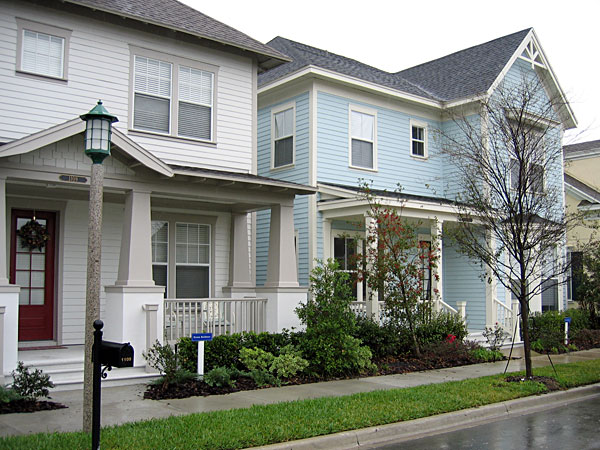 Photograph by Witold Rybczynski.
Photograph by Witold Rybczynski.What to make of Celebration? Like all American real-estate ventures since colonial days, it's a mixture of vision, business, and blarney. The design and planning are an order of magnitude better than what is usual in planned communities. If there is a trickle-down effect—and the financial success of Celebration has not gone unnoticed by commercial homebuilders—Celebration may push developers in the direction of denser, more varied, and better designed suburban communities, which will be a good thing. But Celebration is hardly the model for the future that Disney intended. A four-bedroom house on a small lot—like the relatively modest Craftsman-style Bungalow pictured here, hardly a McMansion—now sells for $450,000. This is more than three times the average selling price of houses in metropolitan areas nationwide, which is currently $140,000, making Celebration the residential equivalent of a Lexus. The truth is that despite its best efforts, the populist Disney Co. has produced an elitist product. This attractively designed town may be cause for celebration, but it is no panacea.